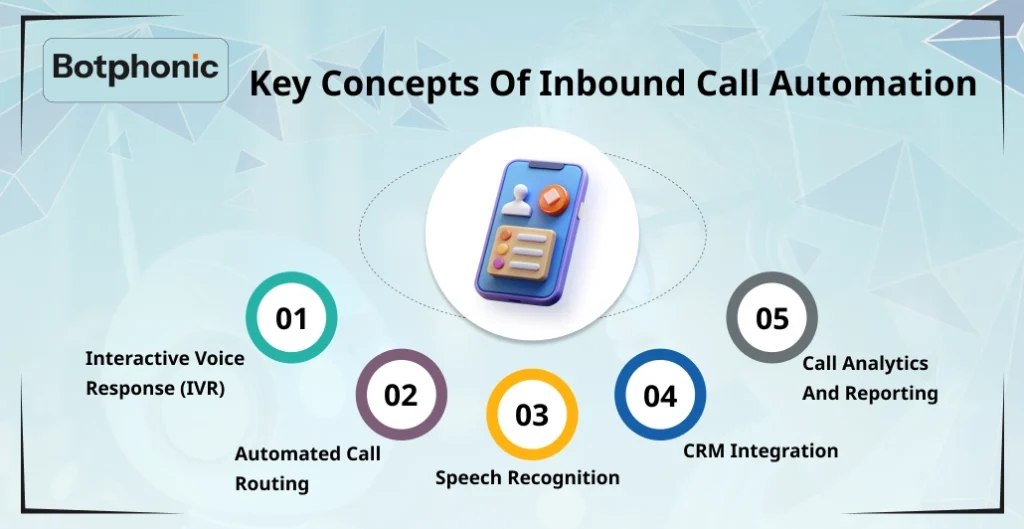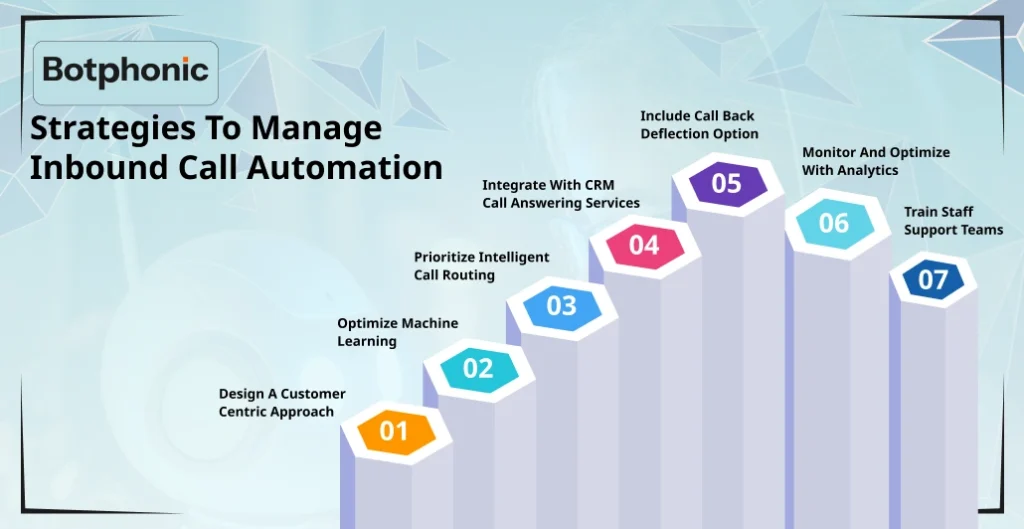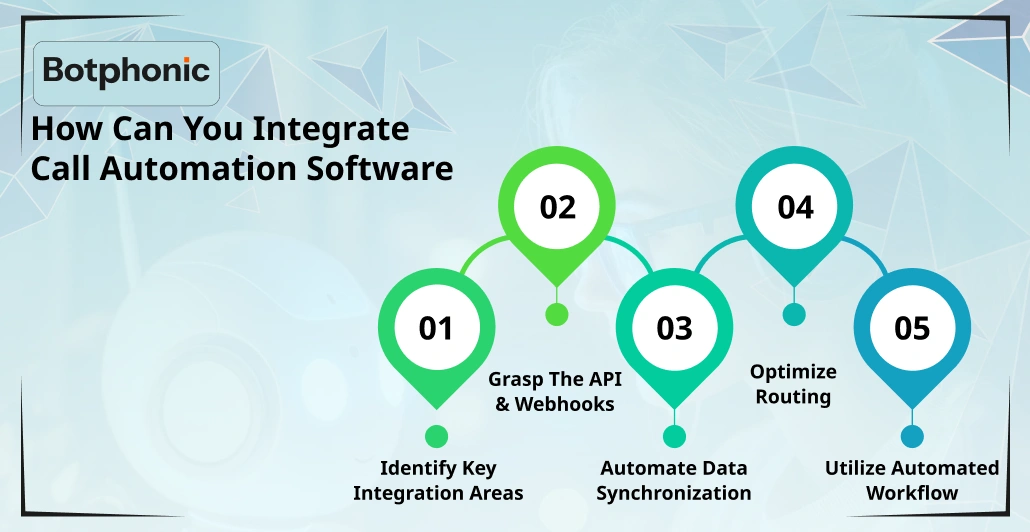
Summarize Content With:
Quick Summary
Inbound call centers have always worked to curate innovative strategies that satisfy customers’ needs and streamline operations too. By integrating AI in inbound call centers, businesses have found a powerful strategy, which is equally important to make their customer base stronger and better than before. In this blog, we will see how inbound call automation helps your business grow and offers useful and relevant benefits.
Introduction
Inbound calls are made by consumers who are going to create a business with them while forming a healthy relationship. It usually involves appointment scheduling, customer support or even solving general inquiries and order tracking. An efficient call handling is rather important for delivering an undoubtedly best customer service and reducing customers and stress.
Businesses make outbound calls to customers. These calls are usually used for sales, debt collection, and customer satisfaction feedback. To achieve success in outbound call, it requires immense power and a targeted approach which helps maximize the response rates.
Traditionally, these calls were used to be made by human agents. Although we know that having a human agent there are some obstacles you need to face, such as availability, high costs and dependency of workforce capacity. But these days there are organizations hiring AI inbound call service or AI voice assistants, who automate these interactions while being available for longer durations and reducing costs too.
Understanding Inbound Call Automation
Inbound call automation refers to the optimization of the technology while handling the incoming customer calls either in a call center or contact center. It involves tasks which are usually automated such as call routing, automatic voice systems, call tracking, or even automated callback systems.
Key Concepts of Inbound Call Automation

- Interactive Voice Response (IVR): It’s a system that coordinates with callers via voice or DTMF tones using keypad input. It helps direct queries based on menu options, for example press 1 for main menu, press 2 for technical support.
- Automated Call Routing: It helps in directing customers to correct agents with the right skill set, who can solve their query more efficiently. With tools such as interactive voice response it helps to put the caller based on their input or as predefined suggestions.
- Speech Recognition: It helps transform the spoken words into readable text so the system can interpret and respond accordingly. Although it can also convert system generated responses into natural sounding speech.
- CRM Integration: By adding this in your organization, it helps link call automation systems with customer relationship management platforms. This allows retrieval of data during calls and leads to even more personalized interactions.
- Call Analytics and Reporting: By using AI automated voice call systems, you can monitor and analyze call data for insights. You can see them in call volume, duration, and even customer sentiment. It helps organizations optimize their performance accordingly.
How AI Voice Assistants are Managing Inbound and Outbound Call Centers?
Organizations managing large volumes of calls face several key issues such as
- Waiting Times: Call centers who are understaffed struggle to keep up with the rising demand which might lead to customer frustrations and dissatisfaction.
- Higher Operational Costs: Even for HR recruiters,continuous recruitment, training sessions and managing new agents can be hassle and expensive.
- Shifting Call Volumes: There are times when calls are on peaks due to seasonal trends and promotions.
- Low Response Rates: With recurring calls customers are inclined to ignore calls from unknown numbers.
- Time-Consuming Process: Call centers who still prefer manual work wastes their resources as agents might spend time dialing and repeating the same script.
AI voice assistants or conversational AI can help with these situational anomalies and can provide you with the positive result no one expected. There are various AI tools for customer service which can be incorporated with natural language processing (NLP). It can understand the queries more efficiently and provide immediate assistance.
AI conversational bot can:
- Manage Numerous Calls at Once: During inbound calls these AI assistants can help handle multiple calls at once. It eliminates the risk of longer queues and waiting times.
- Respond to FAQs: With automated call systems, it can answer frequently asked common questions such as pricing plans, policies or working hours.
- Schedule and Reschedule of Appointments: By incorporating them in the system and giving access to scheduling tools and CRM it can help with scheduling the appointments.
- Target the Right Customer: It can help target potential customers using the CRM data provided leading to better conversion rates.
- Personalize the Chat: With previous data and CRM, these virtual assistants can personalize the chats based on their preferences and needs.
- Automated Reminders and Follow-ups: While keeping the previous data in store, it can also set the reminder and follow-up messages to keep the user and itself updated.
Strategies to Manage Inbound Call Automation

To manage these inbound phone calls effectively, it requires a blend of technology, user experience design, and continuous optimization of the data.
Here are some key strategies to ensure a successful management of inbound call automation.
1. Design a Customer Centric Approach
To create a perfect automated voice call system, map out the most common customer journey and design the flow of your agent around user intent. Try to avoid complex IVR menus and keep navigation simple.
2. Optimize Machine Learning
Use machine learning to analyze the previous data and predict the user’s intent to solve the query as soon as possible or to route the call more effectively. Implement AI-powered voice bots or even virtual assistants to handle the complex queries.
3. Prioritize Intelligent Call Routing
Always use skills-based routing to connect potential customers to agents with the correct expertise and knowledge. Opt for priority routing for VIP customers or issues that require immediate attention.
4. Integrate with CRM and Call Answering Services
Ensure that the automated voice call systems have access to the customer data from the CRM platforms which helps them understand the foundation of calls. Allow bots and call centers to pull the relevant information instantly. It reduces handling time and enhances personalizations.
5. Include Call back and Deflection Option
Always ensure to provide callback features during peak hours, which helps reduce hold times. SMS or emails are also used to deflect calls towards the self-service channels such as sending links to a help objective.
6. Monitor and Optimize with Analytics
Monitor track metrics such as first call resolution(FCR), call abandonment rate and even average handling time. It will also help you verify customer satisfaction rate and you can identify to get insights of bottlenecks and opportunities.
7. Train Staff and Support Teams
By educating your staff and agents on how the system works, you can handle escalations effectively and use data provided by automation tools. It will help you ensure better support and create an adoption across teams towards new gen.
How Can You Integrate Call Automation Software

With the help of call automation, you can always manage your workflow effectively and increase your efficiency. Let’s know how we can integrate automated inbound call service to a business and make it grow.
1. Identify Key Integration Areas
- CRM Integration: Ensure to connect your call automation software with your CRM. It will help you provide agents. With the overall data of customer’s query and preferences, which help you lead a more personalized experience.
- Email Platform Integration: With automated email follow ups and conversation you curate a detailed communication with the user.
- Analytics Tool Integration: Get detailed analytics on the key performance indicators that have been analyzed and gain insights into call center operations.
2. Grasp The API and Webhooks
There are many call automation solutions which offer API and webhooks that allow you to connect with other systems and perform. It enables you to programmatically access and exchange data between systems and updates regarding real time event-driven communications.
3. Automate Data Synchronization
Try setting up the call center automation which will help you get synchronized automatically between the software and other systems. And it might help you reduce your workload of going through the previous data and get updated on recent terms.
4. Optimize Routing
Implement call automation solutions to upgrade the call routing and distribution. It will ensure calls get forward to the appropriate representative.
5. Utilize Automated Workflow
Ensure to set up the automated workflow which streamlines the repetitive and time-consuming tasks such as lead identification, and scheduling appointments.
Benefits of Integrating Inbound Call Automation In Your Business
By using an AI call assistant to manage the tasks which are repetitive and creating a hassle while focusing on major tasks. It will help save time and effort even while cutting the costs.
1. Enhanced Customer Experience
- 24/7 Availability: Due to its availability, customers can get required assistance anytime they need as per their convenience rather than company’s.
- Immediate Response: It helps reduce waiting time through AI automated phone call systems, call routing, and call backs.
2. Increased Operational Efficiency
- Call Volume Management: These are made to handle large volumes of calls, without getting stressed and overwhelmed.
- Automated Task Execution: While handling the repetitive tasks,such as checking order status, or sharing reminders, it doesn’t need agent involvement to assign tasks.
- Optimized Workforce: It allows human agents to give their full-fledged attention to more complex situations.
3. Cost-Effective
- Reduced Labour Cost: With the automation for call centers; it reduces the need for larger staff and saves labor costs.
- Lowers Training Expenses: Unlike human agents automation tools don’t need ongoing training sessions.
- Scalability Without Increased Labor Force: They are automated in a way that they can easily handle the seasonal or even sudden spikes in call traffic.
4. Enriched Data Collection
- Real Time Data: With live data it captures the caller’s behavior and preferences giving us insight about them.
- Analytics: It provides thinkable and doable insights into the call performance, trend and the occurring bottlenecks hurdling the growth.
- Integration with CRM: By integrating the CRM, it enriches the costumes profile with call data, improving the future interactions and making it more personalized.
5. Competitive Advantage
With adoption of contact center automation, it enhances the brand reputation. It puts emphasis on building trust by delivering faster, smarter, and reliable service.
Conclusion:
Inbound call automation, driven by virtual AI assistants and machine learning is no longer just a concept but has become a competitive necessity. From reducing the waiting times to increasing higher conversion rates. AI virtual assistants have become a full-fledged support for call centers to help increase business growth and create a stronger and loyal customer base.
By leveraging AI-powered solutions, make your business take the lead in redefining the goals of customer service.

